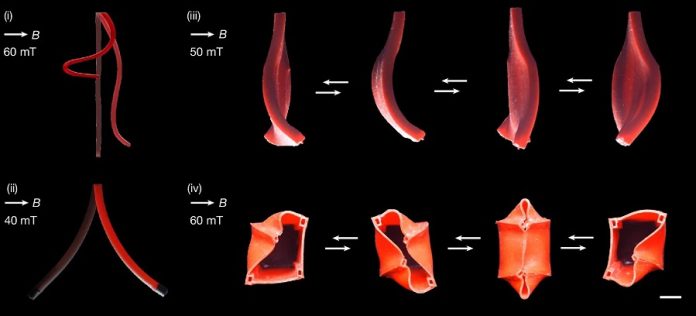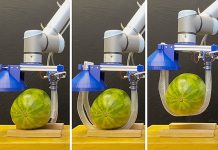
Imagine a robot that can change its shape on demand, twisting, bending, or stretching without needing its magnetic field altered.
This is the breakthrough achieved by researchers at the Max Planck Institute for Intelligent Systems (MPI-IS) in Germany, working with colleagues at Koç University in Turkey.
Their new study, published in Nature, shows how a robot built like a set of Matryoshka dolls—stacked tubes that can slide in and out of one another—can reprogram its magnetization and shape in real time.
Until now, magnetic robots were limited because their magnetization patterns were fixed during production.
Once created, they could only respond in one pre-defined way when placed in an external magnetic field.
That meant their movements were predictable and restricted. But with this new design, the rules have changed.
The research team, led by Professor Metin Sitti, built a soft robot made of several nested tubes, each containing magnetic units.
These units can be pre-programmed to behave in different ways. When the tubes slide relative to one another, the position of the magnetic units shifts, which changes the magnetization profile of the whole robot. Crucially, this happens in real time and without changing the magnetic field around it.
As a result, the robot can transform instantly: a straight tube can curl into a helix, bend in the opposite direction, or adopt entirely new shapes. Even more exciting, the approach is not limited to simple tubes. It can be expanded to two- and three-dimensional structures, opening the door to complex, shape-shifting machines that can perform multiple tasks on demand.
For now, this work is driven by curiosity and the desire to expand the boundaries of robotics. But the researchers also see clear practical applications. One particularly promising use is in medicine, especially in minimally invasive procedures such as vascular surgery. In these treatments, doctors insert catheters and guidewires into delicate blood vessels to diagnose or treat conditions. The problem is that these instruments inevitably rub against the vessel walls as they curve, sometimes damaging tissue and causing complications.
This risk is especially high for older patients, whose fragile vessels make the procedures dangerous. Many of them choose medication instead of surgery, even if surgery might be more effective. The new robot technology offers a potential solution. By reprogramming the catheter’s magnetization profile on the fly, doctors could adjust its shape to perfectly follow the curves of the vessel. That means far less friction, minimal contact, and greatly reduced risk of damage. In practice, it could make life-saving procedures available to patients who are currently considered too high-risk.
The researchers also demonstrated other possibilities, such as reprogrammable cilia arrays—tiny hair-like structures that can move fluids or particles in controlled ways—and the coordination of multiple instruments under the same magnetic field. During their experiments, they even discovered unexpected features like shape retention and magnetic neutralization, which could spark entirely new technologies in the future.
“This stack of tubes could become the guiding principle of a new catheter technology,” said Sitti, now President of Koç University. “While it began as basic research, we see huge potential for real-world applications.”
Lead author Xianqiang Bao added, “Our initial goal was simply to reprogram magnetization in real time. But along the way, we uncovered new possibilities we hadn’t imagined. This is only the beginning.”
With its ability to change shape instantly, this Matryoshka doll-inspired robot is more than a clever design—it may be the first step toward a new generation of medical tools and adaptive machines that adjust themselves to the world around them.
Source: Max Planck Society.



